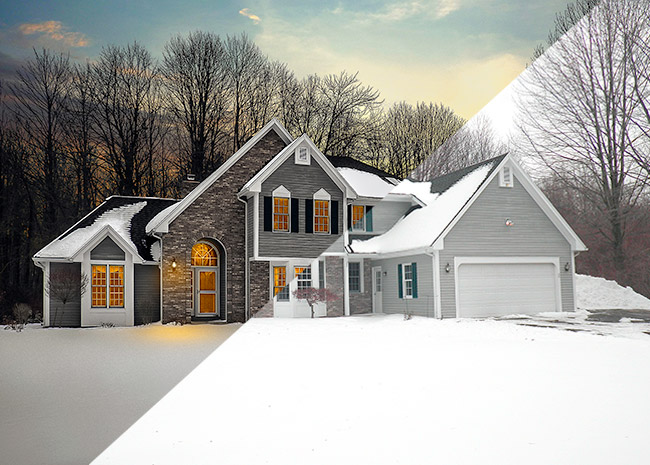Real Estate Photography is intended to show homes and property in the best possible light. Used as a way to advertise the property online and in print, the ultimate goal is to present the home as both attractive and marketable. However, with the varying degrees of retouching and post processing involved, an important question arises… At what point does retouching and post processing become a misrepresentation of the property?

There are a handful of standard editing techniques applied in post processing images for Real Estate Photography. The most common edits include color correction, adjusting saturation, brightness, contrast, sharpening the image and adjusting for lens distortion.
However, as the photo editing process becomes more involved, some may question where the rhetorical line is drawn between marketing the property and misrepresenting the property. Editing techniques such as replacing lawns, removing or modifying telephone poles or wires, and removing neighboring homes from images are all areas of editing that could be questionable to some viewers.
From a marketing standpoint, what matters most is a stunning photo that will generate a lot of interest among viewers and potential buyers. However, to render an image from a standard unedited picture, to an amazingly beautiful marketing tool, there is a certain degree of tweaking, retouching, and masking involved.
The Real Estate Photography
Business Systems You Need
PhotoUp is the ultimate real estate photographer business platform.
When editing Real Estate Photography, we find that the easiest and best way to decide whether you are enhancing the image, or overly manipulating the image, is by simply asking yourself this question: To make this change in real life, would it cost the homeowner money?
For example, to remove a stump from the lawn would cost the homeowner money. So, that would be considered over-manipulation. Same thing goes for lawn replacements, wire removals and removing neighboring houses. To remove something from the yard, like a shovel or a hose, would not cost the homeowner money, so that edit is perfectly acceptable.
As for sky replacements, natural weather does not cost the homeowner, so it is a fair and reasonable edit. (In fact, sky replacements are one of the best ways to enhance an image and make it appear more marketable – so we highly recommend them!)
With editing issues such as this, where preference and perspectives vary for every individual, it really is hard to write down hardline rules. And because photographers in this particular field have become quite a community, taking into account every opinion on the subject is a lot of work.
While some Real Estate Photographers may agree that patching up brown spots on a mostly-green lawn is alright, others may feel that digitally rendering a green lawn on top of a bare dirt yard is considered misrepresentation.
Whatever the case may be, most photographers do self-regulate and set their own rules as to how much post-processing they allow on their own photos. How about you? How far would you go with your own edits?
+++++++++
On this particular subject, the PFRE community has previously posted guidelines for photographers. While it does not necessarily outline strict laws and regulations, it does offer anyone in the real estate photography field a good groundwork on which to base their own personal editing ethics.







